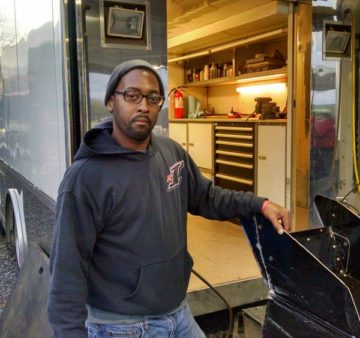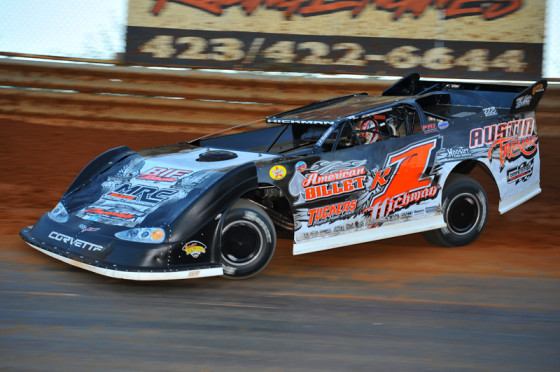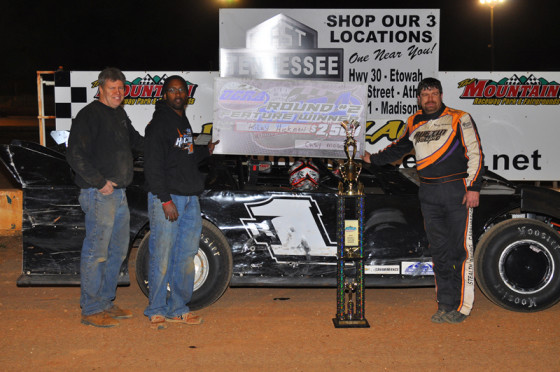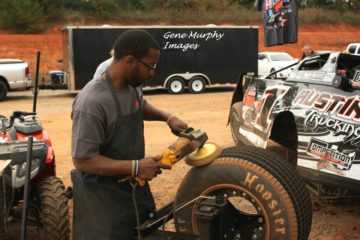Preparing and maintaining a single Dirt Late Model race car for a night at the track is a difficult chore. But adding a second car to the mix not only doubles the work load but also increases the stress level. Few know that better than Brad ‘Urkel’ Carvin, who helps keep the cars to be raced by Southern All Stars Dirt Late Model Series champion Riley Hickman on the track.
While Hickman is perhaps best known for his exploits as a championship winning Super Late Model competitor, he often brings along a Crate Late Model or Limited Late Model car to the track as well if one of those classes is on the schedule for a particular night. Carvin is more often than not at the forefront of keeping those cars in top condition for his driver.
“The biggest thing with having two on one night is just trying to keep up with both cars and making sure you have things like the lug nuts tight and the tires are checked and the fuel is checked,” Carvin explained in an interview with InsideDirtRacing.com. “I tell you, a lot of people want to try to run two cars on the same night and before you know it, you’ve got a wheel loose or you have some problem. But the biggest thing is trying to stay on top of everything. It’s tough sometimes and sometimes it goes pretty smooth. Once you do it, you kind of get used to it.”
Carvin adds that the advantages of racing two machines on the same night can outweigh any disadvantages that might crop up.
“For the most part I like doing it,” the crew chief declared. “It seems like it makes the night go by faster. And honestly, it helps us if we’re going to run a super race and a crate race because it seems like we can be better in the super car just because we ran both cars and could try some stuff there. Sometimes it works and sometimes it don’t.”
Having his driver on the track more often throughout the night helps to eliminate guess work and provides more real time information as the night goes on.
“We get a better idea of what kind of tires we need to be on for that second car,” Carvin said. “We can make a better guess as to what tires to go with and it seems like it pays off.”
However, there can be drawbacks if something goes wrong during the course of events.
“If one of the cars gets damaged, it can put the pressure on,” he pointed out. “The biggest thing is having an outlook on what you need to do and make sure everything is in place to make the changes you need to make. If you get something torn up, it helps to have some people there who can help. It’s usually me, Riley and another guy and we all three just really know the ins and outs of the car so if we have a problem, each person knows their job and you’re not falling over people. People who try to run two or three cars at a race and they haven’t done it before, you’ll notice that they’ve got people tripping over each other and then neither performance is good because they don’t have a baseline of what needs to go on as far as who needs to do what. You need to have a program together where everybody knows their job.”
As is so often the case, the real work of racing two cars on the same night takes place in the shop both before and after the racing takes place.
“Trying to get two cars ready at the shop is not always the hardest part. People don’t realize the cleanup that goes into dirt racing. You’ve got all these combinations of tires then you’ve got two cars. The crate car usually winds up with more body damage because everybody’s got the same horsepower and they’re running the same speed therefore you wind up with everybody racing a little bit closer. Just trying to get all the body work straightened up and the maintenance so you can make sure everything is going good and you can come out here and do your best week in and week out.”









